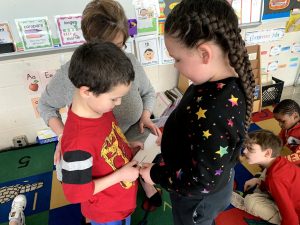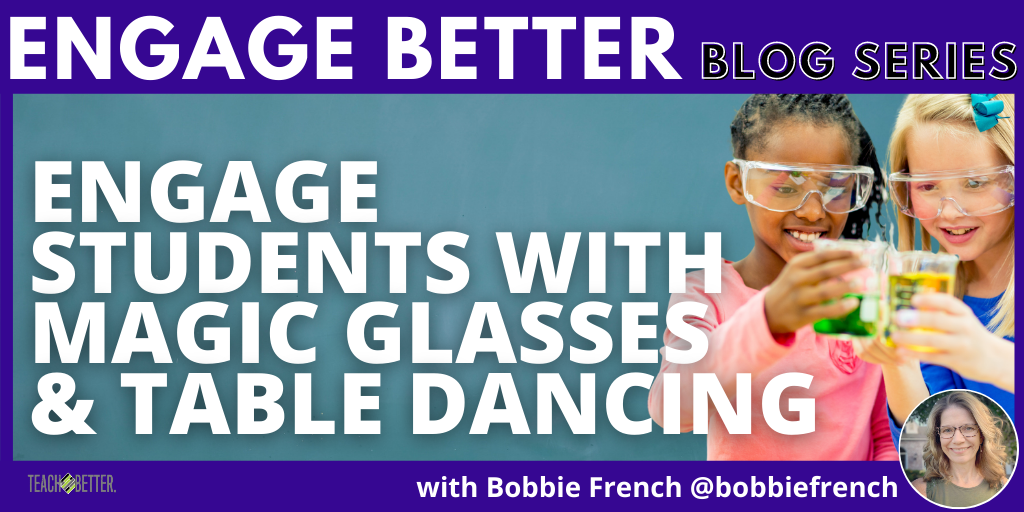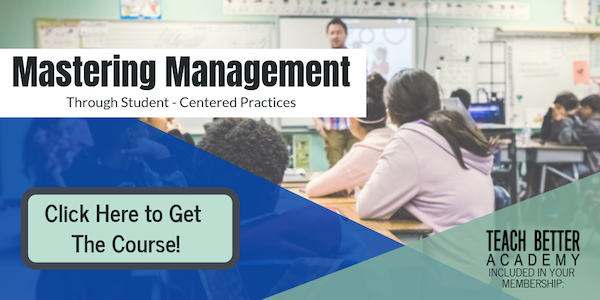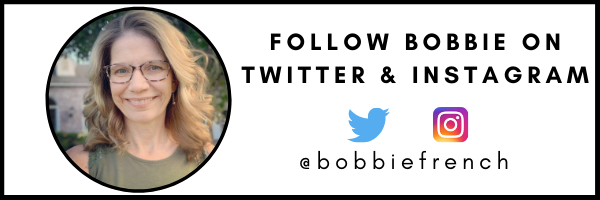TL;DR:
- Reimagine your lessons to make them more engaging for students.
- Some ways to engage students with your lessons include magic glasses and table dancing.
- Other ways to increase engagement in your lessons include finding ways to infuse movement, friendly competition, student conversations, and sometimes a little whimsy.
Bueller? Bueller? Bueller…anyone? Anyone? Are you teaching to an ‘empty’ room? If students didn’t have to be in your class, would they show up? These are the questions educators are asking themselves as they work harder than ever to engage students.
Imagine you are doing classroom visits and you stop by Mrs. Jones’s classroom. Mrs. Jones is at the front of the room and she’s talking all about the water cycle. She is using a PowerPoint visual to help her describe the water cycle and why it is important to people and animals. She is enthusiastic and you can tell she truly enjoys teaching this subject.
You look around the classroom and realize it is EMPTY! There are NO students in the classroom. No students anywhere, but Mrs. Jones just keeps teaching to the empty room. She teaches with enthusiasm but she’s missing the engagement piece and involving students in their learning.
The majority of us learn from doing and not from listening. We learn through active learning and not as passive receivers of information. Click To TweetWhat does engagement look like?
Let’s visit another teacher, Mrs. Sals. We walk into Mrs. Sals’s room and we can hear the joyful sounds of students engaged with their learning. Students are working in small groups. They are talking about the water cycle and making terrariums. They have plans drawn out to describe the water cycle and are using their plans to discuss the features they need in their terrarium. Student discourse includes content vocabulary and appropriate questioning to further their thinking. You notice turn-taking and cooperation as the groups problem solve, make sure their project meets the task requirements, and assess their work based on a rubric.
The difference between these two scenarios is student engagement and participation. A teacher’s role is to nurture an enthusiasm for learning in their students. As the saying goes, the one doing the talking is doing the learning. If we are not engaging and involving the students, we might as well be teaching to an empty room.
The majority of us learn from doing and not from listening. We learn through active learning and not as passive receivers of information. Benjamin Franklin sums this up with his famous quote, “Tell me and I forget. Teach me and I remember. Involve me and I learn.”
The grill is hot, now what?
How are you involving and engaging your students? In my last post, we talked about preheating the grill. What do you do now that your students are eager to learn?
Think of ways to get your students up and moving. Get creative. Mrs. Sals looks at her lessons and thinks of ways to infuse movement, friendly competition, student conversations, and sometimes a little whimsy.

In a math lesson about comparing lengths, the first graders practiced going head to head and lining up their endpoints, and stating whether theirs were shorter than or longer than the other persons. Students came up to the teacher in pairs (one from each team) and took one of the slips of paper. They then turned to face each other and quickly lined up the endpoints and declared shorter or longer than.
These students were engaged and practicing the vocabulary and objective of the lesson. Compare this to the alternative of completing a worksheet, indicating from the pictures which one is longer or shorter.
Engage students with some whimsy and magic.
As a way to launch a new reading lesson, Mrs. Sals had students come into class to find ‘magic glasses’ that would help them read sight words around the room! The magic and whimsy of the glasses had the students excited. The first graders couldn’t wait to start reading. They wanted to read EVERYTHING they could find. You could see how PROUD the students were of the words they could read. They kept looking for harder and harder words to read.
I again ask you to compare this to reading words from a workbook or worksheet. Would these same students persevere when they reached a difficult word or skip it? Would they be as eager to find more difficult words to read? And would they be as excited and proud of the reading they were doing?
Beyond the Reading Log
Here’s another example. We all know the [dreaded] reading logs. I agree that reading nightly plays an integral role in developing a child’s reading skills. These students develop their vocabulary, expand their background knowledge, practice their phonics skills, and more. However, we know how much students do not want to read every night, more so because they dread filling out that reading log.
Jim Trelease says it best, “Every read-aloud is an advertisement for pleasure, every worksheet is an advertisement for pain.” How do we instill a love of reading in our students but still assess what they are reading and understanding?
Mrs. Law learned about this new technology app called “Flipgrid.” She couldn’t wait to try it with her students. She decided that her third graders would stop filling out their reading logs and instead create a Flipgrid video. The assigned 20 minutes of nightly reading remained the same, but instead of the nightly log, students recorded a video at the end of the week and shared what they read, what they learned, connections they made to the text, and any questions they had.
Her students’ reading exploded! The students couldn’t wait to read so they could have something to talk about in their video. The videos were amazing and for some became a vlog about their books. Each child could use their own personalities and creativity to talk about their reading. They even started sharing their videos with one another and providing each other with comments or feedback.
[scroll down to keep reading]Engage students by dancing on the table.
I remember my son’s second grade teacher, Mrs. Huhtala. She turned engaging students and high expectations into an art. This was her superpower. She had high expectations for her students and instilled those expectations in her students consistently and with love. When she assigned weekly spelling sentences, she expected students to use all they learned and to write vivid sentences. She did not expect anything less.
However, when students reached the bar she set for them, she would dance on the table! Yes, DANCE on the table! Her students were so excited to meet those expectations that they would write and write. My son couldn’t wait to write his long, vivid sentences and show Mrs. Huhtala how well he could do it. And possibly get her to dance on the table.
How are you involving students in their learning? Are students excited to show up for your class? Would they show up if they didn’t have to? Could you sell tickets to your lessons?
Call to Action
Over the past year, teachers have had to reimagine their lessons to make them more engaging and accessible for online teaching. What are some of the ways you have brought those lessons to life for your students? My call to action for you is to continue reimaging your lessons for the classroom.
About Bobbie French
Bobbie French is an educational leader, presenter and writer from Massachusetts.
Bobbie has been an educator for over 24 years. She has been an elementary guidance counselor, classroom teacher, special education coordinator, Title I Director, Preschool Director and Administrator.
Bobbie is passionate about focusing on the whole child and creating an environment where all students have a sense of belonging. She appreciates and recognizes the hard work of teachers, and is committed to supporting others to be their best for kids every day. Her passion and enthusiasm for creating a positive and engaging school culture is contagious.
Bobbie is also an avid photographer and loves to tell her school’s story.





